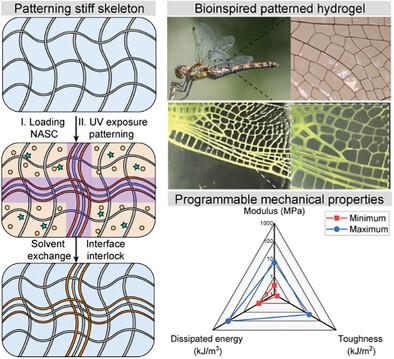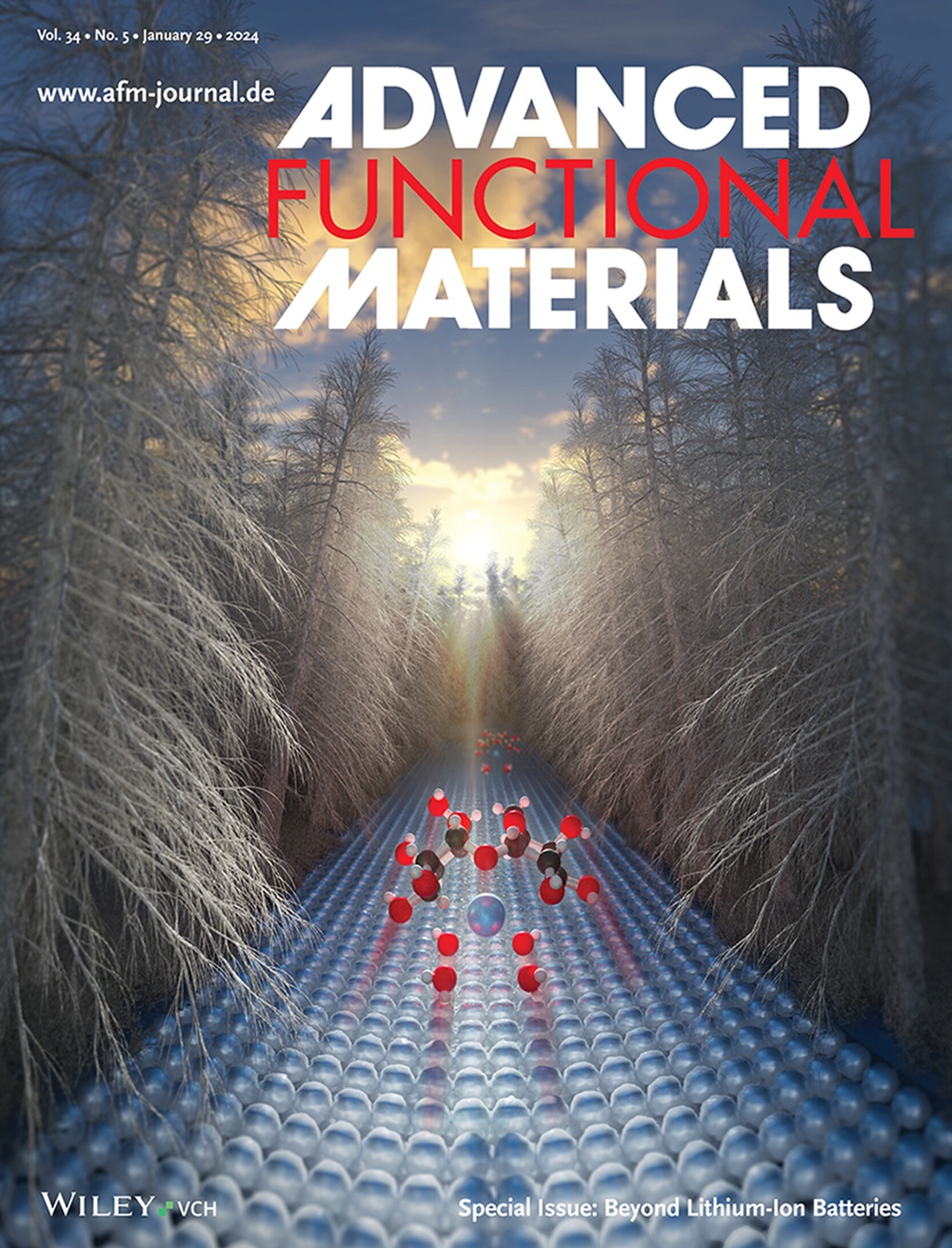Sculpting Mechanical Properties of Hydrogels by Patterning Seamlessly Interlocked Stiff Skeleton
IF 18.5
1区 材料科学
Q1 CHEMISTRY, MULTIDISCIPLINARY
引用次数: 0
Abstract
Functional soft materials, especially hydrogels have been widely developed to achieve various soft structures and machines. However, synthetic hydrogels commonly show formula-dependent mechanical properties to fulfill the requirements of mechanical elasticity, stiffness, toughness, and tearing-resistance for adapting to complex application scenario. Inspired by heterostructures and materials found in nature such as leaves and insect wings, a sequential photopolymerization process combined with site-selective patterning exposure is reported to prepare programmable hydrogels with locally heterogeneous reinforcement skeletons, i.e., interpenetrating double networks. The heterogeneous interface between soft matrices and stiff skeletons is seamlessly interlocked through strong multiple hydrogen bonds induced by phase transition. By harnessing the size, shape, and distribution of the patterned stiff skeletons, a wide range of mechanical properties of hydrogels including modulus (0.32–5.92 MPa), toughness (0.15–18 kJ m−2), dissipated energy (1–100 kJ m−3), impact resistance, and mechanical anisotropy can be readily sculpted within one material system without needing design and optimization of the complex and elusive material formulation on demand. It is believed that this simple yet powerful method relying on heterogenous patterning would guide the development of functional hydrogel materials with programmable mechanical properties toward potential engineering applications, such as damping and flexible circuits.

通过绘制无缝交错的刚性骨架雕刻水凝胶的机械特性
功能性软材料,尤其是水凝胶,已被广泛开发用于实现各种软结构和机械。然而,合成水凝胶通常表现出与配方相关的机械性能,以满足机械弹性、刚度、韧性和抗撕裂性的要求,从而适应复杂的应用场景。受自然界中的异质结构和材料(如树叶和昆虫翅膀)的启发,一种顺序光聚合工艺与位点选择性图案曝光相结合,制备出具有局部异质增强骨架(即互穿双层网络)的可编程水凝胶。软基质和硬骨架之间的异质界面通过相变诱导的强多重氢键实现无缝互锁。通过利用图案化硬骨架的尺寸、形状和分布,可以在一个材料系统中轻松雕刻出水凝胶的各种机械特性,包括模量(0.32-5.92 兆帕)、韧性(0.15-18 千焦 m-2)、耗散能量(1-100 千焦 m-3)、抗冲击性和机械各向异性,而无需按需设计和优化复杂而难以捉摸的材料配方。相信这种简单而强大的异质图案化方法将引导具有可编程机械特性的功能性水凝胶材料的开发,从而实现阻尼和柔性电路等潜在的工程应用。
本文章由计算机程序翻译,如有差异,请以英文原文为准。
求助全文
约1分钟内获得全文
求助全文
来源期刊

Advanced Functional Materials
工程技术-材料科学:综合
CiteScore
29.50
自引率
4.20%
发文量
2086
审稿时长
2.1 months
期刊介绍:
Firmly established as a top-tier materials science journal, Advanced Functional Materials reports breakthrough research in all aspects of materials science, including nanotechnology, chemistry, physics, and biology every week.
Advanced Functional Materials is known for its rapid and fair peer review, quality content, and high impact, making it the first choice of the international materials science community.
 求助内容:
求助内容: 应助结果提醒方式:
应助结果提醒方式:


